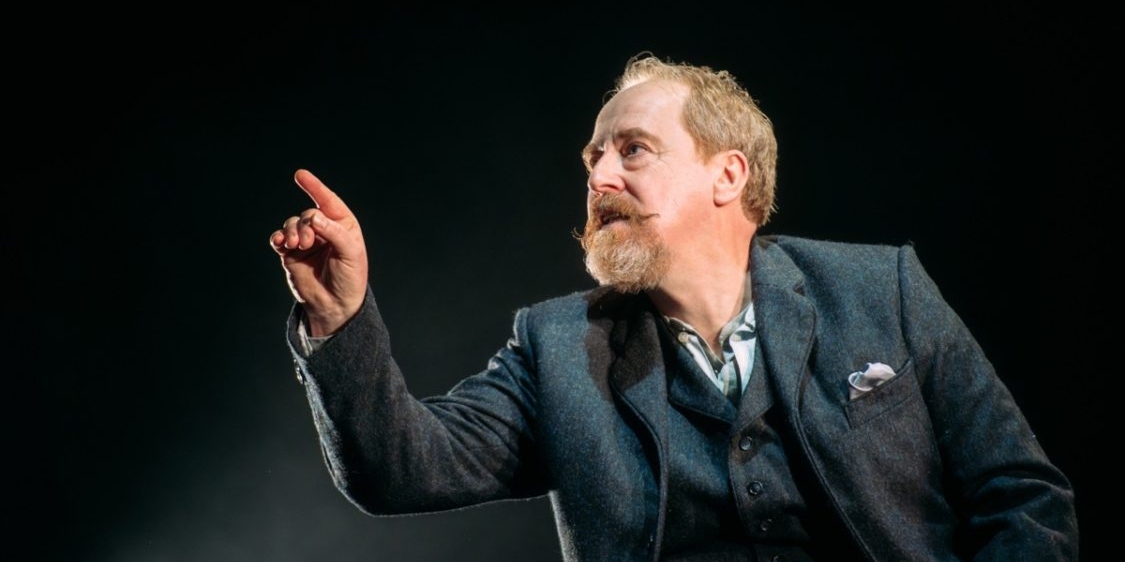Michael Fentiman and Gary McNair’s retelling of the classic Robert Louis Stevenson novella Strange Case of Dr Jekyll and Mr Hyde opens on a black stage, lit with a stark white square and populated only by a microphone stand. That first image – coupled with the play’s taut 70-minute run time – is a good indication of the minimalist approach taken by the director and writer, and their single performer, Forbes Masson.
Here, Hyde is presented as an aspect of Jekyll’s personality (an aspect of us all, in some way) who needs no potion or tincture to emerge. Nineteenth-century preoccupations with the dangers and opportunities of science are replaced by more twenty-first-century concerns around identity. Hyde shares Jekyll’s body without needing to magically transform into another physical being, perhaps a particularly apt approach for a production in which the sole performer plays half a dozen or more parts.
Forbes Masson manages the switching between these roles seamlessly. With the addition of a pair of pince-nez, some braces or a bowler hat, he clearly conjures each of the protagonists. He mostly wisely avoids trying to physically inhabit either Jekyll or Hyde, largely leaving the key protagonists to our well-primed imaginations.
In this he is greatly aided by the staging and lighting design. The set is reduced to a simple black box, framed by a square of white light and with the lighting units clearly visible at each side of the stage. A chair and a mic stand (which doubles as a hat rack) are all the furniture visible. Behind Masson, the ominous door to Hyde’s lair emerges and recedes in the darkness. Flashes of light and, even more dramatically, flashes of darkness punctuate the production and bring gasps from the fully-invested audience.
The stripped-back minimalism of the design is exactly in sync with writer Gary McNair’s sympathetic adaptation and Masson’s ability to sell the imagery. Against the inky black backdrops and stark white lighting, visions of a foggy London and a monstrous Hyde are conjured more effectively by the mind’s eye than any set or costume could do.
McNair sticks closely to the structure of the original narrative, and there are few surprises in the storytelling. It is such a well-known tale that he can largely take for granted the audience will know where it is going, but anyone new to the twist of Hyde’s true identity will have no trouble following the plot, or in being enthralled while doing so. By injecting some well-timed modern humour, McNair makes the script feel engaging for today’s audience, without losing any of the ominous Victorian atmosphere, although there might have been an opportunity to move the setting from London to Edinburgh, given Masson’s cast of Scottish characters.
Stevenson’s Strange Case of Dr Jekyll and Mr Hyde lends itself perfectly to performance as a one-person show. The story provides a clear canvas for an actor of Masson’s abilities to unpick its inherent themes of identity and duality. In a world which is increasingly challenging binary, simplistic ideas of identity, this production of Jekyll and Hyde is a powerful retelling at an apposite time.

